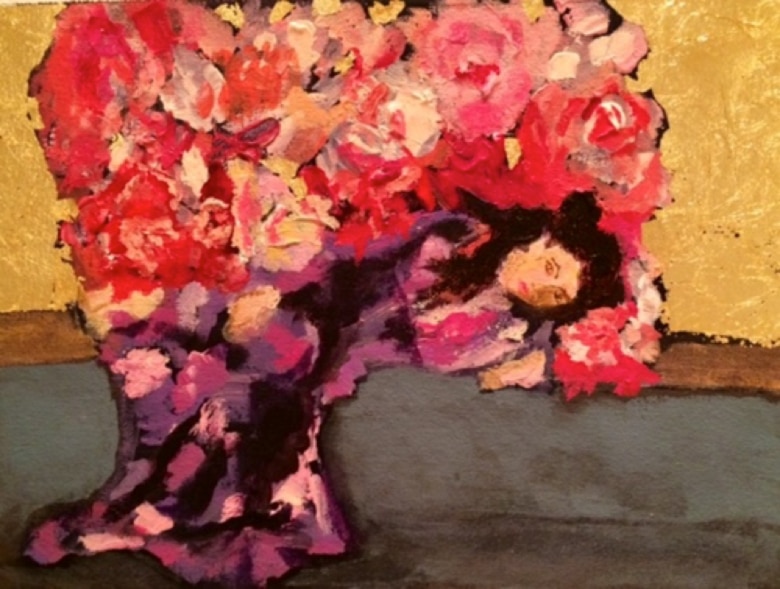More than a century ago, New York City’s Central Park looked much like it does today. Pastoral landscapes, picturesque rusticism, elaborate foliage, winding paths, and carriage underpasses create a space for all to enjoy. This is the way landscape designer Fredrick Law Olmstead intended it to look far into the future. In the 21st century, Central Park still remains as the people’s sanctuary; a place that not only houses artistic declaration, but also exists as an art form in itself.
Cities act as the microcosms of the world’s population and are outwardly defined by their inhabitants. Central Park offers an escape from the perpetually chaotic nature of city activity. But have you ever stopped and realized that art is all around, even in the most crowded places? Yes, there was a time when people went to galleries of Charles Saatchi and other art collectors to ponder over the artistic genius. It may seem surprising to appreciate the city itself as artistically created. Who would know better than the natives themselves?
Recently the urban space has become a possible inspiration for a wide range of artists globally. With projects that aim to interpret the urban communities to their fullest. From interactive projects that might be found through a website similar to this one, https://infoart.hfg-karlsruhe.de/open-doors-ein-interaktives-kunstprojekt-im-stadtraum-karlsruhe/ or projects that are less interactive and more focused on showing the message, the urban space arguably has become influential, on both art and artists globally.
Camilla Webster, born and raised in the city, has supplemented her own work through the interweaving of her many talents, including her co-authorship of her book The Seven Pearls of Financial Wisdom and a keen eye for art. Painting from a young age had become one of her undeniable passions. After studying modern history and the history of art in Scotland, Camilla pursued not only fieldwork in journalism, but embraced a producer position at CBS News and Forbes.com and was appointed broadcast editor at The Wall Street Journal. Her “long history of watching issues in the field and covering stories” unexpectedly fostered her involvement and interest in international economies and social issues, specifically from her coverage of the war in Iraq; September 11, 2001; and the digital revolution.
Her hectic life began to shed light on larger societal problems most individuals struggle with today. Camilla wanted a way to calm down and attempted to slow the fast pace of the bustling city. Her meditational practice of painting soon sparked her desire to “give something back to New York.” As a co-founder and editor-at-large of New York Natives, a superb social media site dedicated to all things Big Apple, she has captured the best of an “art-in-front-of-you” methodology.
The urban revolution of democratized art, brought to and produced by its people, appears in unfathomable and unexpected forms-the Highline, lighting (for example, the neon signs such as those found on www.neonfilter.com), street art, graffiti, modern architecture, and horticulture-which uniquely reside as aesthetic advances. Speaking of aesthetics, have you noticed the trend where families have also incorporated art within the confines of their homes in the form of an aesthetic peel and stick wallpaper, art portraits, and sculptures? Camilla has discovered the city to be its own type of art, and through her production of ARTBEAT, she brings new awareness and presence in not only understanding what it means to be a New Yorker, but also to be human. In studying and seeking motivation by way of certain moments experienced in her own life, Camilla says, “art has the amazing ability to have us decelerate, but it also often represents incredible ideas as well.”
In the spirit of TEDxNavesink, Camilla’s artistic philosophy extends the culture of the five boroughs to the Jersey Shore. During TEDxNavesink 2015 at Monmouth University, Camilla will be featuring her exhibitions capturing New York moments in unanticipated ways. “It is important for us to see at TEDxNavesink that art is for everyone, as it bridges the gap where art used to stand at a distance.”
Have you ever regarded a packed subway car or street corner full of signs as art? Camilla has, and finding art in ordinary objects and places is one way she skillfully breaks the barrier.
By utilizing a dynamic approach to art, Camilla has learned to process information differently and through a refreshed lens. In her inventive and spontaneous approach to all things artistic, Camilla epitomizes the processes of acceleration as well as deceleration, which seem to be creatively cyclical. Deceleration is purely part of the course of action and should not be considered negative. “Let’s use different speeds of energy to have incredible results,” she says.
Much of Camilla’s inspiration has been ignited by her experiences, including a recent trip to the Galapagos Islands where she was able to decelerate from urban life. Camilla then brought her island adventures back to New York and was able to reinterpret art in its natural form. “This is the age of transparency,” she says. As we progress into an innovative digital era, art becomes not only more accessible, but redefined and revolutionized in daily life.
To learn more about Camilla’s work, visit http://camillawebster.com, http://www.camillawebsterart.com, and http://newyorknatives.com.
Do you want to experience her exhibitions in Pollak Theater for yourself? Join us on April 11, 2015 at Monmouth University. Make sure you get your tickets for TEDxNavesink 2015 before they’re gone!
Image courtesy of Camilla Webster:
Sub Rosa, http://www.camillawebsterart.com/#/sub-rosa/
 Tedi Pascarella is a content production intern on the TEDxNavesink team and a student at Monmouth University.
Tedi Pascarella is a content production intern on the TEDxNavesink team and a student at Monmouth University.

